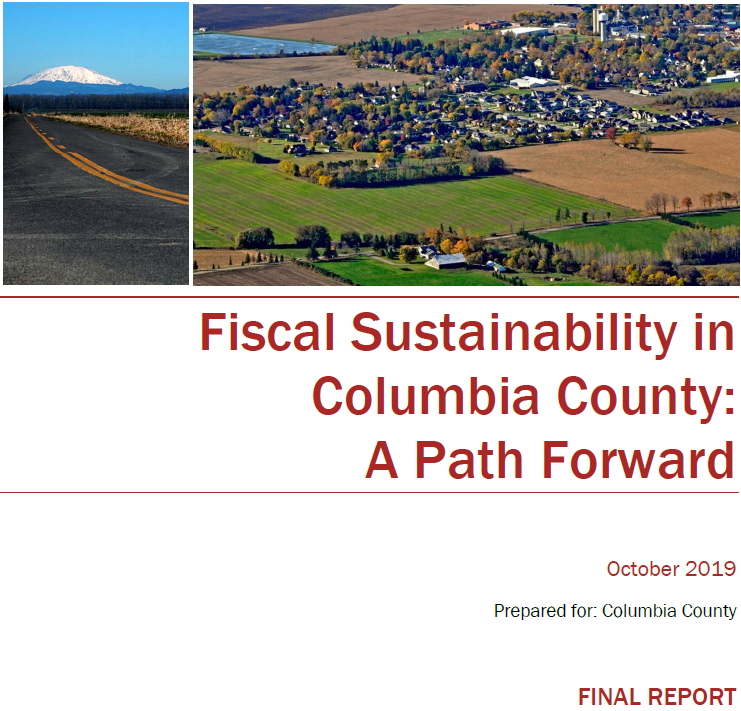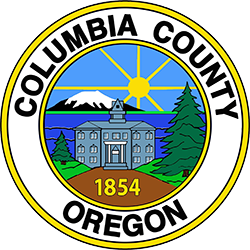Published on November 26, 2019

The Columbia County Board of Commissioners has adopted a report that details new revenue sources that have the potential to improve the county’s fiscal position over the next three to five years. The report, entitled “Fiscal Sustainability in Columbia County: A Path Forward” is the result of months of technical work and discussion regarding revenues and expenditures as well as funding needs for the county.
The board utilized the services of ECONorthwest to research more than a dozen possible revenue sources that would fund a variety of county services. An ad-hoc advisory committee of residents and representatives of county business, public health, education and economic development interests provided feedback on the possible methods and to inform the process.
“Oregon property tax laws have hampered the ability of local governments to raise one of the most important revenue sources that they can access,” said Commissioner Alex Tardif, who served as board liaison to the study, which took place over six months. “With Measures 5 and 50 limiting the growth of property taxes, counties across the state have had to look at alternative methods to fund critical county services.”
The purpose of the study was to create a funding strategy that would provide a sustainable solution to funding challenges, meet a variety of county-wide needs, and would be understood and supported by the community. The study will also guide the county’s strategic decision-making processes in the coming years.
The report adopted by the commission identifies 15 potential methods that if successful, would raise an estimated $242 million from community fees, local option levies, service districts and a variety of user taxes. The funds would be directed towards roadway use, operating and capital expenses, and maintenance, among other needs. Cities would also benefit financially from the approval of some of the methods.
With help from county staff and the advisory committee, the potential new revenue tools were evaluated across five criteria. These include legality, efficiency, proportionality/equity, political feasibility and magnitude of additional funding. Based on that evaluation, the advisory committee narrowed down the revenue tools to a short list of those with the most near-term viability. ECONorthwest then projected funding capacity for those tools and built funding scenarios to meet the county’s unmet funding needs.
“We know that doing nothing and maintaining the status quo will harm the county’s ability to fund the services our residents want and need,” said Tardif. “We have projected that over the next five years, to simply maintain our existing level of services and make vital capital improvements, we would need at least $29 million.”
Tardif further explained that for the county to fund any increases in service needs and to implement other projects identified as high priority, an additional $42 million in revenue would be needed. These high priority projects include improving public health, transportation and safety services, road maintenance, and bringing broadband to residents across the county.
“The Board of Commissioners recognizes that any new revenue sources could impact county businesses and residents, therefore, they should be fair and equitable,” Tardif said. “But our residents are the ultimate decision-makers; what we have done is to create a framework for them to understand the needs, trade-offs and ways to improve their county’s fiscal situation.”

